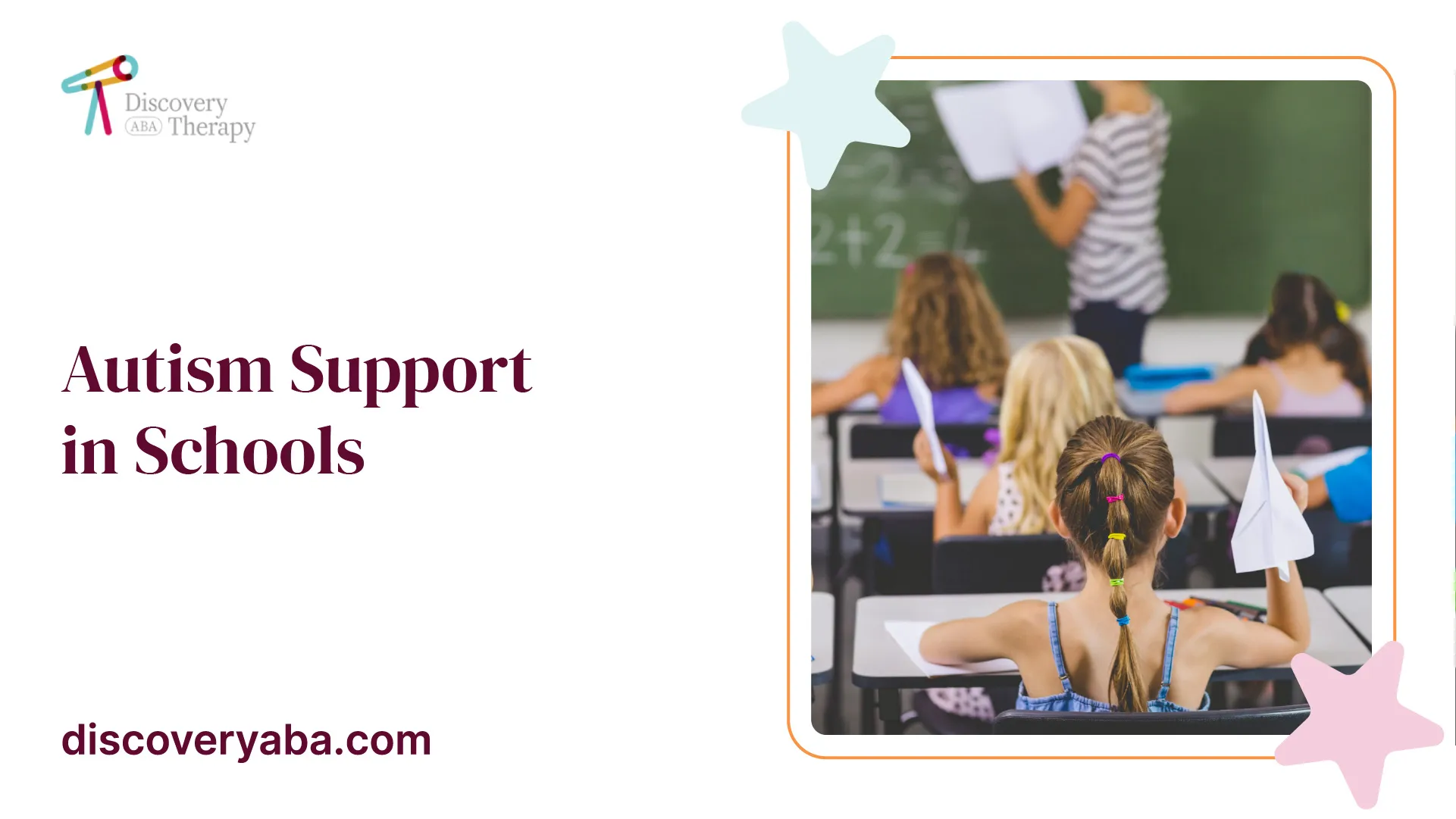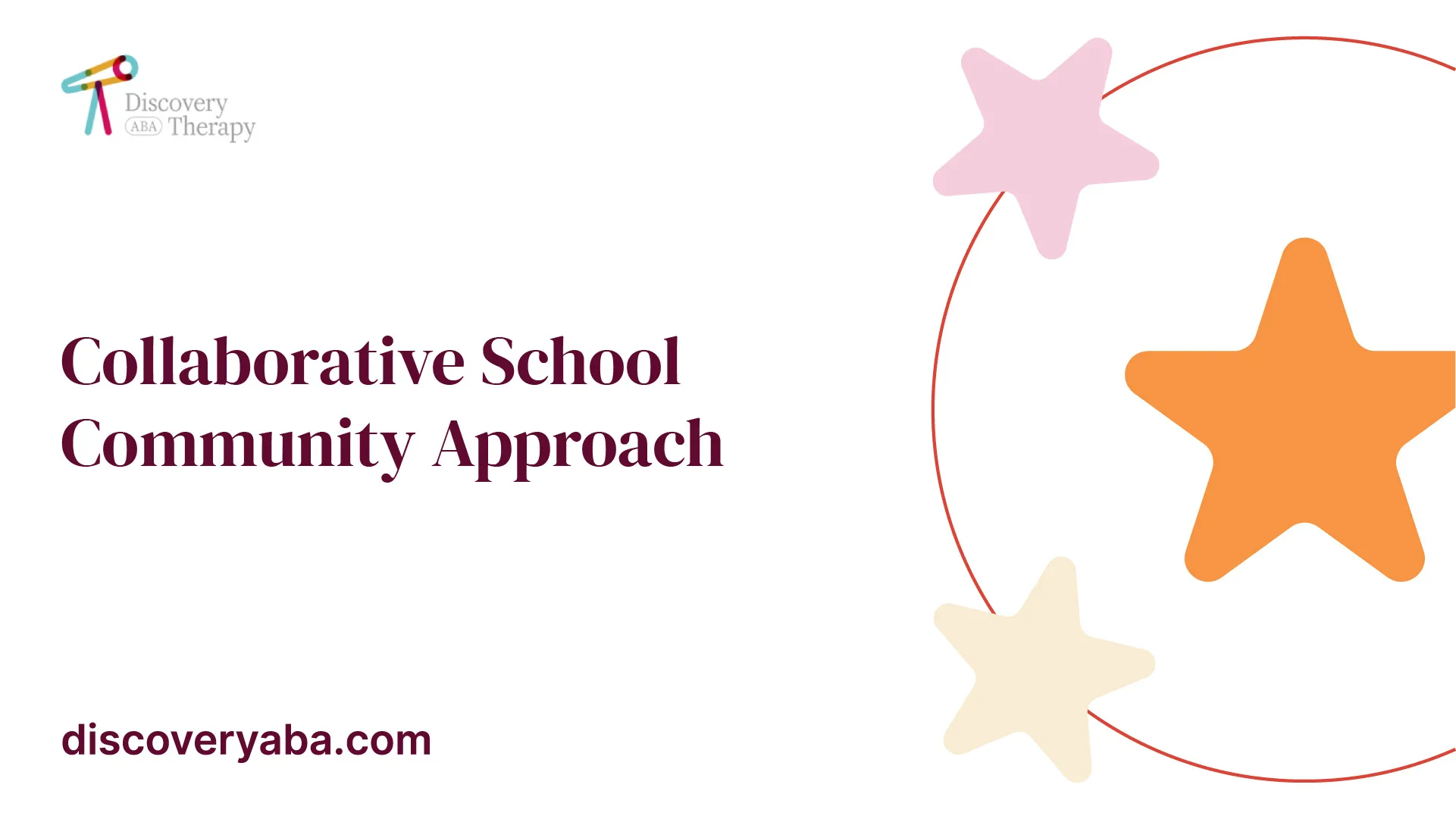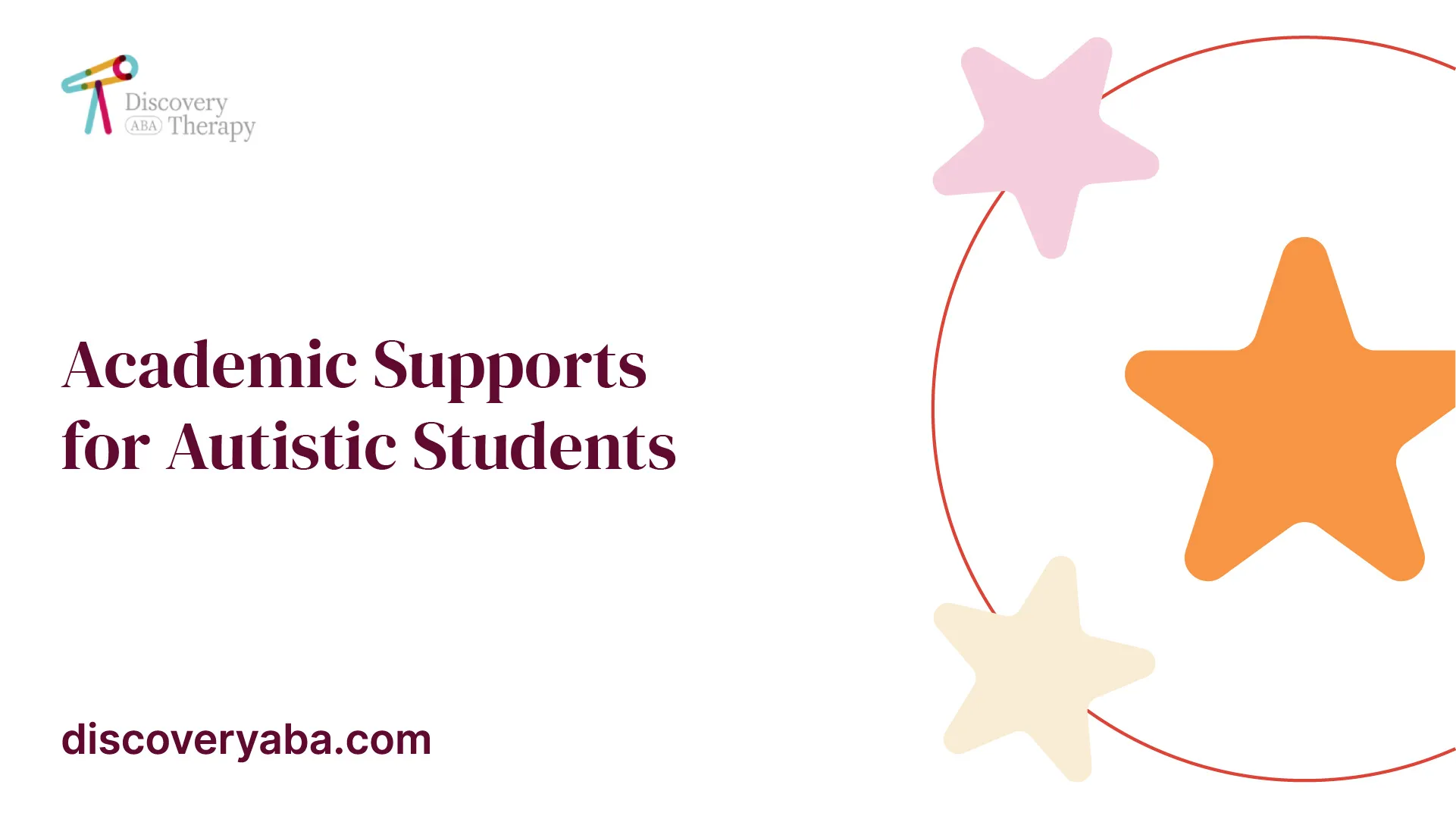Autism Support in Schools
Discover effective autism support in schools for students. Collaborative strategies, evidence-based practices, and academic accommodations.


Strategies for Autism Support
Supporting students with autism in schools requires implementing effective strategies that foster their growth and success. Two key approaches to consider are the collaborative school community approach and promoting autonomy and decision-making.
Collaborative School Community Approach

A collaborative school community approach is vital in ensuring the success of students with autism. This approach involves working together with teachers, educational assistants, school-based teams, and community partners to create a supportive and inclusive environment. By following the TEAM acronym (Together Everyone Achieves More), families can feel understood, supported, and experience positive outcomes for their autistic children.
Schools can benefit from utilizing the Autism Speaks School Community Tool Kit, which provides 14 autism teaching strategies tailored for teachers and all members of the school community. These strategies are designed to set students up for success in various subjects and promote their overall development.
Advocacy is an integral part of the collaborative approach, ensuring that the rights of autistic children are defended and that they receive appropriate services and accommodations. Collaboration, on the other hand, focuses on child-centered decision-making processes, giving parents a voice in determining the best placement and services for their children.
By fostering collaboration and creating a supportive school community, schools can contribute to long-term outcomes for autistic students, including positive interactions with classmates even after graduation. This advocacy and inclusive culture help ensure dignity, respect, and a sense of belonging for all students.
Autonomy and Decision-Making
Promoting autonomy and decision-making is crucial for the development and well-being of autistic students. Allowing students the opportunity to make meaningful choices and have their voices heard fosters a sense of ownership and empowerment in their educational journey.
Creating an environment where students feel they are making important decisions enhances their engagement and motivation. Teachers and school staff should respect and value the autonomy of autistic students, giving them opportunities to make choices that align with their preferences and needs.
Inclusive classrooms should provide options for students to exercise their autonomy. For instance, allowing students to choose from different assignments or providing alternative ways of completing tasks can help accommodate their individual learning styles and interests. By leveraging their autonomy, students with autism can actively participate in their educational journey and experience a greater sense of ownership and achievement.
By adopting a collaborative school community approach and promoting autonomy and decision-making, schools can provide effective support for students with autism. These strategies, when implemented alongside evidence-based practices and academic supports, contribute to a more inclusive and empowering educational environment for all students.
Advocacy and Collaboration
When it comes to autism support in schools, advocacy and collaboration play crucial roles in ensuring positive outcomes for autistic students. It is essential to defend the rights of children with autism to receive appropriate services and accommodations while fostering child-centered collaboration between parents and educators.
Defending Rights and Child-Centered Collaboration
Advocacy entails actively defending the rights of children with autism to ensure they receive the necessary support and accommodations in the educational setting. This involves advocating for individualized education plans (IEPs) that address the specific needs of each student. By advocating for appropriate services and accommodations, parents and educators work together to create an inclusive and supportive learning environment for autistic students.
Collaboration, on the other hand, focuses on child-centered decision-making processes, giving parents a voice in determining the placement and services for their children. Effective collaboration involves working closely with teachers, educational assistants, school-based teams, and community partners. By following the TEAM acronym (Together Everyone Achieves More), the educational community can better understand, support, and promote the success of autistic students [1].
To facilitate effective collaboration, it is crucial to establish open lines of communication between parents and educators. Regular meetings, such as IEP meetings, provide opportunities for collaboration and ensure that all stakeholders have input in decision-making processes. By fostering a collaborative approach, parents and educators can work together to create a supportive and inclusive educational experience for autistic students.
Long-Term Outcomes and Inclusion
Schools should focus on long-term outcomes for autistic students, not only during their time in school but also in their interactions with classmates post-graduation. It is essential to create a culture of inclusion and acceptance that extends beyond the classroom. Schools play a vital role in advocating for students with autism, ensuring their dignity, respect, and inclusion in all aspects of school life [1].
Understanding the context of a child's home environment, including cultural traditions, beliefs, and practices, is also crucial for educators working with diverse families. By familiarizing themselves with routines and activities at home, teachers can gain a deeper understanding of a child's behavior and better support them in the school environment [3]. This understanding can help create a more inclusive and culturally responsive educational experience for autistic students.
By advocating for the rights of autistic students and fostering child-centered collaboration, schools can create an inclusive and supportive environment that promotes positive outcomes for all students. It is through collaboration and a commitment to long-term inclusion that we can ensure that autistic students receive the support they need to thrive academically, socially, and emotionally.
Evidence-Based Practices
Implementing evidence-based practices (EBPs) is crucial for providing effective support to students with autism in schools. These practices have been shown to be effective in teaching appropriate behaviors and skills while reducing inappropriate behaviors. The National Professional Development Center on Autism Spectrum Disorder has identified 27 evidence-based practices for improving outcomes for students with ASD [4].
Implementing Effective Strategies
To determine which evidence-based practices to use with a specific student, educators and practitioners should follow a four-step process:
By following this four-step process, educators can ensure that they are implementing evidence-based practices that are tailored to the specific needs of the student.
Four-Step Process and Evaluation
After selecting and implementing an evidence-based practice, it is crucial to evaluate its effectiveness for the individual student. This evaluation involves collecting data on the behavior and assessing whether the evidence-based practice was implemented with fidelity.
If the chosen practice is not effective, it is important to reevaluate and consider alternative strategies. The data collected during the evaluation process can help educators make informed decisions about the next steps in supporting the student's needs.
In addition to the 27 identified evidence-based practices, there are high-leverage practices (HLPs) that have been shown to increase student performance for students with Autism Spectrum Disorder (ASD). These practices include small-group instruction, functional behavior assessments, peer-assisted strategies, and creating organized and supportive learning environments. Incorporating these HLPs alongside evidence-based practices can further enhance the support provided to students with autism in schools.
By implementing evidence-based practices and following a systematic evaluation process, educators can ensure that they are providing effective support and interventions for students with autism in school settings. These practices help to create a structured and supportive environment that promotes learning and development for students with autism.
Academic Supports for Autistic Students

For autistic students, academic success often relies on implementing specific supports tailored to their unique needs. In this section, we will explore two important academic supports that can greatly benefit autistic students: assignment accommodations and modifications, as well as visual supports and the concept of a home base.
Assignment Accommodations and Modifications
Many autistic students require assignment accommodations and modifications to ensure their success in school. It's important to note that these accommodations and modifications do not excuse students from completing their work, but rather provide access to the content and skills at the center of the assignments [5]. By making these adjustments, educators can help create an inclusive learning environment where autistic students can thrive.
Assignments can be modified by breaking them down into smaller, more manageable tasks. This can help reduce overwhelm and improve focus. Additionally, providing clear instructions and expectations can enhance understanding and increase the chances of successful completion. Individualized accommodations may include additional time for assignments, preferential seating, or the use of assistive technology to facilitate communication or written expression.
By implementing these accommodations and modifications, educators can help level the playing field for autistic students, ensuring they have the necessary support to engage with the curriculum and demonstrate their knowledge and abilities.
Visual Supports and Home Base
Visual supports play a crucial role in supporting the learning and comprehension of autistic students. These supports can include image-based information, written versions of information, or visual schedules. Visual supports help autistic students focus, provide clarity, support understanding of school rules and expectations, and assist those with challenges in auditory processing or executive function.
Visual supports can be used to enhance communication, such as using visual cues or visual aids to supplement verbal instructions. They can also be utilized to provide predictability and structure, which is particularly beneficial for autistic students who thrive in routine and struggle with transitions.
In addition to visual supports, creating a designated "home base" within the school environment can be highly beneficial for autistic students. A home base is a designated place where students can plan, review daily events, regain control after a meltdown, or seek respite from stress. It is essential that the home base is perceived as a positive and reassuring environment, never used as a form of punishment or escape from tasks.
By incorporating visual supports and establishing a home base, educators can provide a supportive and structured environment that fosters the academic success and well-being of autistic students.
These academic supports are just a few examples of the strategies that can be implemented to create an inclusive and supportive learning environment for autistic students. By recognizing and addressing their unique needs, educators can empower autistic students to reach their full potential and thrive academically.
Student Engagement and Communication
Effective student engagement and communication are key factors in providing autism support in schools. By leveraging interests and providing choices, educators can create an inclusive learning environment that promotes active participation and fosters positive relationships with students on the autism spectrum.
Leveraging Interests and Providing Choices
One approach to engaging students with autism is to tap into their fascinations and interests. By incorporating these into the curriculum, teachers can spark enthusiasm and motivation for learning. This can be achieved by designing lessons that integrate students' passions, using them as tools to teach various subjects such as reading, math, and social studies. By embracing their interests, educators can inspire engagement and facilitate meaningful connections between students and the content being taught.
Additionally, offering choices to students, including those with autism, can provide them with a sense of control and ownership over their learning. This can be done by integrating choice into various aspects of the school day, such as assessments, group roles, and personal assistance preferences. Providing options empowers students to make decisions based on their preferences and strengths, fostering a sense of autonomy and self-advocacy.
Writing Alternatives and Training Needs
For students with autism, writing can be a challenging task. Teachers can consider alternatives to traditional handwriting methods to accommodate their needs. This may involve allowing the use of computers, word processors, or typewriters to help these learners focus on the content rather than the motor skills required for handwriting. By providing these alternatives, educators can support students in expressing their thoughts and ideas effectively.
In addition to alternative writing methods, it is essential for teachers to understand the specific training needs of students with autism. Engaging in direct communication with students, either through surveys, interviews, or involving families for input, enables educators to gather valuable insights and tailor their approaches accordingly. By actively seeking input from students and their families, teachers can create a supportive and inclusive learning environment that meets the unique needs of students with autism.
By leveraging interests, providing choices, and accommodating writing alternatives, educators can enhance student engagement and communication in the classroom. These strategies contribute to a more inclusive learning environment that empowers students on the autism spectrum to actively participate and thrive in their educational journey.
References
[2]:
[3]:
[4]:
[5]:
[6]:
Does Your Child Have An Autism Diagnosis?
Learn More About How ABA Therapy Can Help
Find More Articles
Contact us
North Carolina, Nevada, Utah, Virginia
New Hampshire, Maine
Arizona, Colorado, Georgia, New Mexico, Oklahoma, Texas
.avif)




































































































